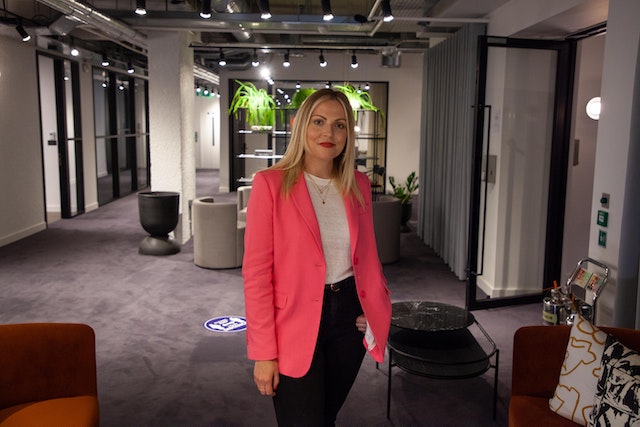15 agency leaders explain how to navigate tense moments with in-house partners
As more clients combine outside and in-house agency expertise, leaders from Carat, Lippincott, Specsavers, 180 and more tell us how to navigate moments of tension.

How should agencies work around friction with in-house partners? / The Drum
You’d have had to have been asleep for the last few years not to have noticed more and more big brands creating in-house agencies. Even cruise lines are getting up to it these days.
What is uncertain, however, is how agencies should respond when they find themselves working alongside an in-house shop. Creative disagreements, working tensions and differences of opinion with another agency on a different part of the brief are hard enough to navigate – but they can require even more finesse when the source of that friction is part of the client’s organization.
How do you solve a problem like... working alongside in-house agencies?

Brendán Murphy, senior partner of design, Lippincott
The most successful engagements have clearly defined roles, responsibilities, and deliverables. That is not to say that each agency won’t, and can’t, contribute to each other’s success. Ad production is a great model to look at where the client, planners, copywriters, and art directors work in collaboration with producers, directors or editors to create and deliver on client stories and experiences.
Communication is key to any good relationship. The bigger and more complex the engagement, the greater need for a regular schedule of check-ins and a clear chain of command. Along with that comes the understanding that the communication function can fluidly pass amongst and between each agency as a project progresses from ideation to research to execution.
Advertisement
Anna Campbell, global client president, Carat
We understand our clients’ needs differ, so for us, it is about designing clear and comprehensive joint ways of working, which includes collaboratively building a rigorous brand planning process with defined areas of responsibility.
But of equal importance is the work we put into relationship building. This allows us to both understand what area of specialism each party brings to the table, as well as to be completely honest when something is not going as expected. We find we can overcome the occasional challenge by ensuring trust and integrity, along with a strong process, remain at the heart of our relationship.
Lyndsey Brown, head of client partnership, The Agency
We’ve got more in common than you may think. Our priority is the work. We operate with the same core principles in mind. And while we are part of the family, we retain discipline around how we work with our marketing clients/colleagues to protect the creative process.
To achieve positive collaboration the core principles remain the same as any partnership. Leave the ego at the door, and carve out blended teams across agencies, truly integrating and collaborating on the work. Connect planners to planners, creatives to creatives. Make time for socials and working sessions together to form bonds and better understand one another.
Advertisement
Embrace the fact that the in-house agency knows the business and brand intimately; and use it to your advantage. Bring outside inspiration to the table, you have more exposure to the external world and a valuable stimulus for the collective. Identify each other’s strengths and be honest about dance spaces. Fundamentally building a foundation of open communication and mutual respect.

Karen Morris, client services director, TMW Unlimited
There was a time when ‘in-housing’ struck the fear of god into the heart of every agency. Today, the reality is a more positive one.
We’ve always focused on building strong relationships with clients and their partners, whether that be other agencies or indeed their in-house teams. True collaboration is doing the right thing for the client’s problem, and this means being open to different perspectives, wherever they may come from. In a hybrid world, we’ve also found having an open-door policy at our respective offices has been incredibly helpful in creating an environment for blended teams to thrive.
Stephen Corlett, chief operating officer, 180 Amsterdam
It starts with rejecting the idea of us and them. We use radical collaboration, an approach infused with empathy and a generosity of spirit. That’s hard for agency land who like control and ownership, and have a natural desire to protect their ideas. But times are changing. If you’re able to foster radical collaboration, you build a level of trust that means you don’t worry about who takes credit or mind if you lose control of the idea. The in-house team sees you offering expertise over the competition. You get more impactful ideas as you’re working with the business to make them happen.
Rosie Hopes, managing partner, insight and strategy, Passion Digital
I enjoy working with in-house teams – often it’s easier than it is with another agency, where competitiveness creeps in. Agencies are there to support you with specialist knowledge, so the relationship needs to be based on “how can we help you and make you look as good as possible” rather than “we’re going to pick holes in your thinking to win the business ourselves”.
The key to sharing the load is the initial scoping and a crystal-clear sense of where responsibilities lie. This understanding at the beginning of the project keeps teams accountable.
Josh Clarricoats, founder, Insiders
As the agency, you should try and adopt an in-house mindset. Don't view it as competition, but as collaboration. Everyone (however challenging it might be) should try to view each other not as a hindrance, but as an asset to utilize to get the best result. Ensure there are regular working sessions with both teams. Be receptive to each other’s ideas – those in-house will know the business better than you, but the external teams have a useful distance and an outsider perspective. Working on the relationships as well as the work means you’ll end up with a more cohesive and effective.
Kev Chesters, strategy partner, Harbour
The solution to the problem lies in not seeing it as a problem. Tensions arise in any creative process, it’s inevitable. But it never needs to get personal or unpleasant. Be honest, act like decent human beings and remember that at the end of the day, we are all working to find the right solution for the client’s benefit, not our own. Sounds simple enough to me.
Sara Taiyo, co-founder and creative director, design and impact agency, Driftime
We have a “with” not “for” approach, reframing the process of working alongside in-house teams as an opportunity for an integrated practice with scope for meaningful collaboration. It’s less about posing a problem to solve, and more about actively aligning our creative team with in-house creatives or client’s teams, to make relationship navigation a smooth operation. More often than not, “working alongside” becomes synonymous with “supporting”; it’s an active verb and one that calls for human-to-human conversation, as well as professional labor to deliver valuable outcomes through honest co-creation.
Matthew Pover, group growth officer, What’s Possible Group
When working with in-house teams, other agencies or media owners, do you want seamless data sharing via APIs and secure FTPs, smooth protocols and servicing cadence, and perhaps even impartial client success consultations to nip any niggles in the bud and keep the frictionless flywheel honest? 100% yes, yes you do. But for complex elements, if you want genuine creativity to thrive, then respectful friction, ideally with a dollop of cognitive diversity (à la Matthew Syed) is essential.
Jon Williams, founder, Liberty Guild
Ego breeds friction. The issue with any agency working with any other agency is ownership and ego. If you’re a big ‘creative lead’ agency and you swagger into the meeting room like the big ‘I am’ then it’s just going to cause a problem, isn’t it? And unfortunately, that’s how a lot of old-school agencies see themselves… no matter how vociferously they pretend it’s not, In-house is on the rise. And why not, they have better brand knowledge, proximity, agility and cost efficacy. But sometimes, through personnel outages, workload imbalance or occasionally by design, they need a little lift strategically or creatively. If you’re the crew rocking up. Remember. You’re quite literally in their house. Respect that.
Oscar Erlandsson, managing director, B-Reel
B-Reel has a lot of experience working with in-house teams, helping them land and bring to life a big creative concept that they can then use their scale to efficiently and effectively roll out globally. We are at our best when we can focus on what we do well: a view from the outside from strategy, through creative to execution. We’ve managed to avoid the friction that often comes from these types of agency, in-house setups by avoiding unclear roles and responsibilities. We’ve learned the importance of honest and clear leadership from both ends of the partnership when collaborating. Keeping the focus on putting out great work as the entire team’s shared goal is the key.
Jamie Ray, co-founder, Buttermilk
We love working with in-house social teams – but we do set up clear swimming lanes – this keeps everyone happy and then it's easy, with trust on both sides.
We need to get to grips with what matters most to the in-house team; what KPIs are they working towards? How does this fit into the brand's overall vision? Once this is understood, it becomes easier to build an influencer strategy that becomes part of a wider approach - everyone is pulling in the same direction. This means when issues do arise, they tend to be resolved with less friction!
Maggie Malek, chief executive officer, MMI
CMOs today know they need integration. The modern consumer is complex, and when you manage brand and performance together, you have to work collaboratively, whether that means internal teams, cross-agency teams or even across platforms. At least 50% of our clients have internal creative, comms, digital or media teams. It’s our job to make it work seamlessly. You need a clear framework, but if you let the people doing the work lead the way with data and KPIs as the true north, they can manage through any tension and handle subjective feedback.
Brooke Tudeen, account director, MKG
When working with internal agencies, remember that the client brought your agency in for a reason. They could have saved on external fees but chose to utilize your expertise. The role of the internal agency in this case is to help make your work better. They are experts on the brand, and are involved in countless conversations you don’t even know are happening. Putting your ego aside and embracing the in-house team as an extension of your own can save you a lot of time and stress. They’re there to help you hone your idea into a viable solution the brand will actually produce.
Want to join in the debate? Get in touch: sam.bradley@thedrum.com
